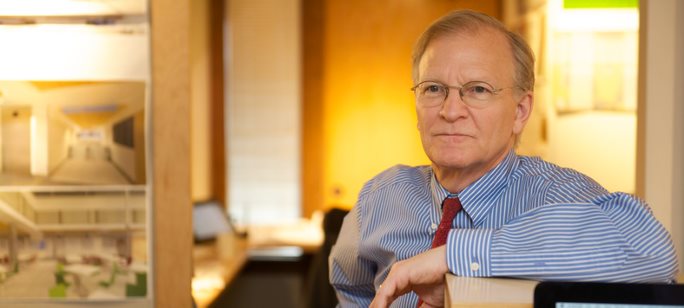This is the first in a 5-part series on understanding the market, planning for the emerging market, and designing for the emerging market.
By Tom Levi, AIA, President and Founder of LWDA, a Senior Housing Forum Partner
| This is the first in a 5-part series on understanding the market, planning for the emerging market, and designing for the emerging market. |
You know who you are – but do you know who you want to be – or have to be?
There is a new normal developing in senior living. Will you be a part of it? This is a huge question that each owner or operator needs to address.
The Present
-
A 65-year-old industry is aging/maturing
(and it’s redefining itself for a new generation of residents) -
Buildings are aging — in place
(and not resilient to react cost-effectively to changes) -
Residents are aging — in place
(and, with care, will live longer and thus become frailer) -
Active adults are not entering ILs that doesn’t support their needs and interests
-
Outside industries and lifestyles are affecting senior living and care more than ever
-
How do you manage the present to support your existing residents while. . .
-
Planning for future residents?
Can you be objective about yourself under these circumstances?
Do you need assistance in doing it?
Change has been slow in coming, but now a major turning point has been reached, accelerating changes for the senior living and care industry over the past few years.
Senior living is being impacted, not only by its own midlife crises but by other industries in which housing developers are capitalizing on the interests and needs of retiring Boomers.
Based on observations in the industry, some providers are not even sure if they understand themselves, let alone their residents, where the industry is going and how to transform traditional legacy facilities, while other providers are refining or reinventing themselves – for the future.
The good news is that, as a result, a great number of new approaches are emerging and being developed within the industry.
It’s Not Easy
The difficult part for most providers is how to strategically plan for the future and then understand how that blends with modifying their financial structure, services, and creative facility-planning and design. It’s a process that most providers were never trained to do and are, therefore, unaccustomed to.
More than ever – finance, services, culture, engagement, brand, facilities, and surrounding communities need to respond to ALL facets of the equation – and work together from the beginning. The most difficult part of the process is 1) recognizing the type of problem you have, and 2) creating a business environment to solve the problem. The regeneration of senior living and care communities must come from top leadership and should involve all employees with a continual improvement process that encourages open communication and ideas.
To think outside the box, a good starting point is to learn from other industries. The active adult industry learned from the senior living Industry – it gave early Boomers what we were not giving them. It is now time to take them back!
Here is how we can help communities do that:
Step 1: Develop a Strategic Planning and Creative-Thinking-Process Team.
Step 2: Build Teamwork: Involve all key players from the beginning (owner, employees, residents, design team, food services, marketing/branding, technology, finance, etc.).
Step 3: Identify the problem and set the tone for change.
Step 4: Empower your own employees to come up with new ideas.
Step 5: Understand your own residents or patients and their families (present and future).
Step 6: Learn from other industries (healthcare, housing, hospitality, retail, business, entertainment, etc.).
Step 7: Ask yourself – what would you want if you were living in your own community?
Step 8: Start the process of change and don’t procrastinate because you don’t know how to start!
Getting It Right
To realize your full potential for developing or re-developing your community you must include visioning, evaluation, and a general assessment. In order to achieve a higher potential, we suggest first focusing on ideas, trends, and unique approaches and needs, not detailed specifics.
Areas of change to consider (no surprises here):
-
Development resiliency
-
Housing options
-
Health/Wellness/Rehabilitation/Sports
-
Affinity engagement
-
Technology engagement
-
Intergenerational options
-
Staff – care support
-
Environmental stewardship and sustainability
-
Community interaction within/without
There are a number of consultants who understand the issues and processes, and your architect is one of them. We routinely work with clients to assess and gain perspective on their present community. We do this through our LWDA Design Navigator© process, which allows for creative thinking and solutions without boundaries.
Next article in the series: Learning from Other Industries.
For more information on LWDA, please visit their website.
Download a PDF copy of this article by clicking on the button below:











